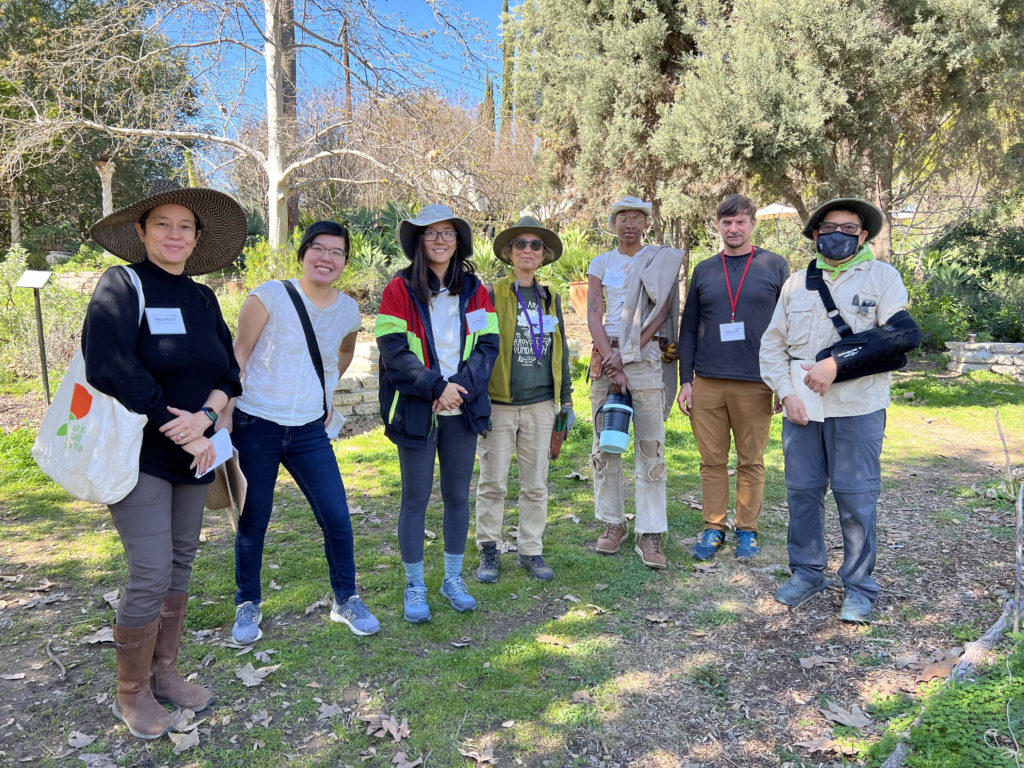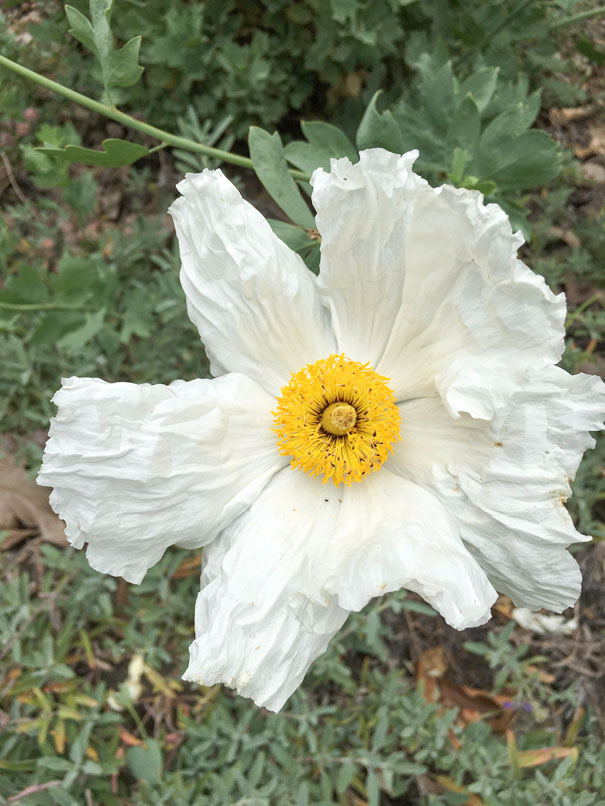LETTERS FROM THE GARDEN
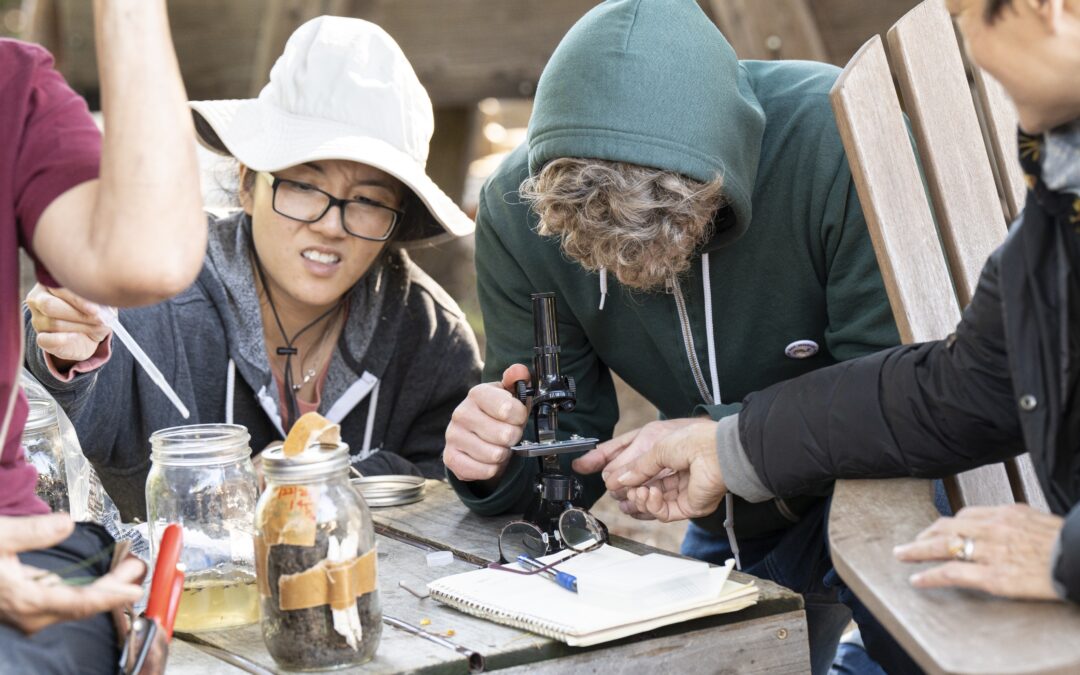
Inside Arlington: AJ
AG: What are your responsibilities at Arlington?
AJ: I am the part time Communications Manager and Volunteer Program Manager. I am also an occasional event producer, very infrequent emergency gardener, regrettable emailer, etc. etc. etc. I write and edit our newsletter and other publications. (Did you see our Botanical Guide? I wrote that.) I also facilitate our Volunteer Committee and put together some extra special volunteer events.
AG: How did you discover Arlington?
AJ: I had been trying to volunteer at local botanical gardens and had been finding it rocky terrain to travel – some gardens near me (not naming names) made volunteering with them difficult. You have to know someone already on the inside, or so it seemed to me, in order to get off the waitlist.
At that moment in my life, I had never heard so much as a whisper about Arlington Garden. read more…

Natural’s not in it: spring in urban Southern California
(AJPJ)
Spring in urban Southern California is … well, the word “unnatural” comes to mind, but it’s prudent to avoid provocation. Safer words might be “novel” or “anachronistic” or “cosmopolitan.”
Spring in Southern California is novel. Like last year, we are enjoying a quite cosmopolitan season of growth.
The proper place to say this is at a VIP luncheon, wearing a blousy floral number. At heart, though, these are just euphemistic ways of saying that SoCal spring is … unnatural.
What is unnatural about our urban spring? Like its human population, most street trees and plants sprinkled throughout the yards of Southern California did not originate here. In fact, they are from climate regions quite unlike our own: they evolved in temperate or tropical areas and follow cycles of growth appropriate to those regions. Many of these species are waking up right now, at the end of our rainy season, in the spring. Since the rains will soon stop, they are undoubtedly grateful for our ever-present irrigation systems. read more…
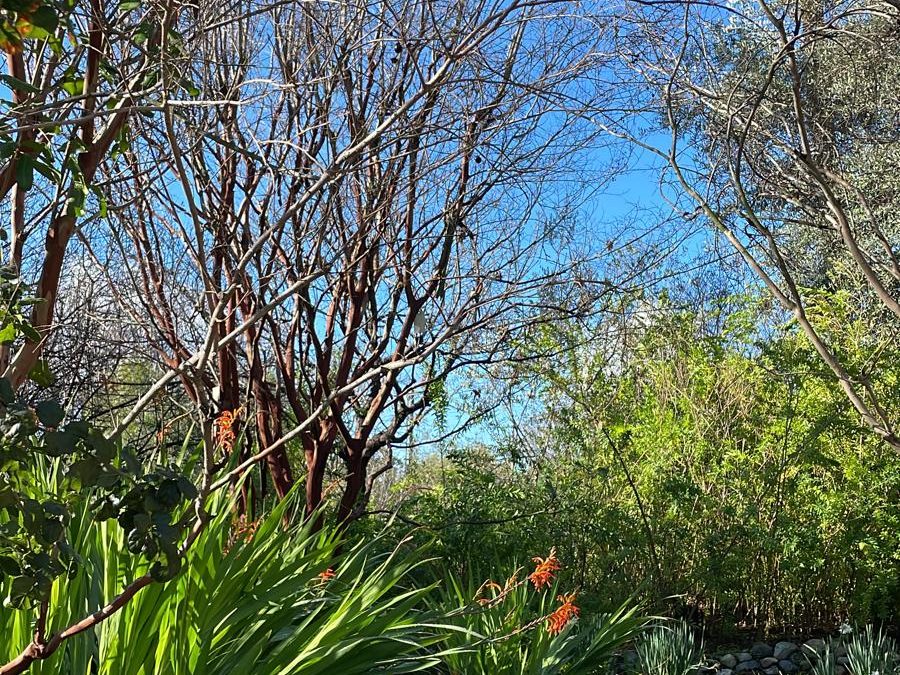
Garden Winter Update
Photos courtesy of Tahereh Sheerazie.
This past week, Pasadena received (“received” as in a blessing) 8.1 inches of rain. According to the local paper, that is 40% of our average seasonal rainfall. A representative from the City reported as of last Wednesday that there were a few “trees compromised … and a few small power outages” but that is all. Arlington Garden’s trails flooded, of course, but that went according to plan – more on that topic below.
The detrimental effects of rain showed up less in Pasadena than other areas. Woodland Hills, for instance, was soaked with 12.6 inches of rain. That neighborhood has become used to extremes. In the summer of 2020, it reached an appallingly hot 121 degrees F. Your editor was driving to the beach that day through Woodland Hills and remembers feeling a crawling unease when he looked at the dashboard thermometer.
Woodland Hills is a stress point where the climate changes of the past decade are felt especially keenly – but Pasadena is not immune. As the planet continues to warm, forecasts show Southern California will have increasingly volatile weather patterns. The fall and spring seasons will have fewer precipitation events, but the storms are likely to be much larger, bringing curtains – rather than showers – of rain, like this storm. read more…
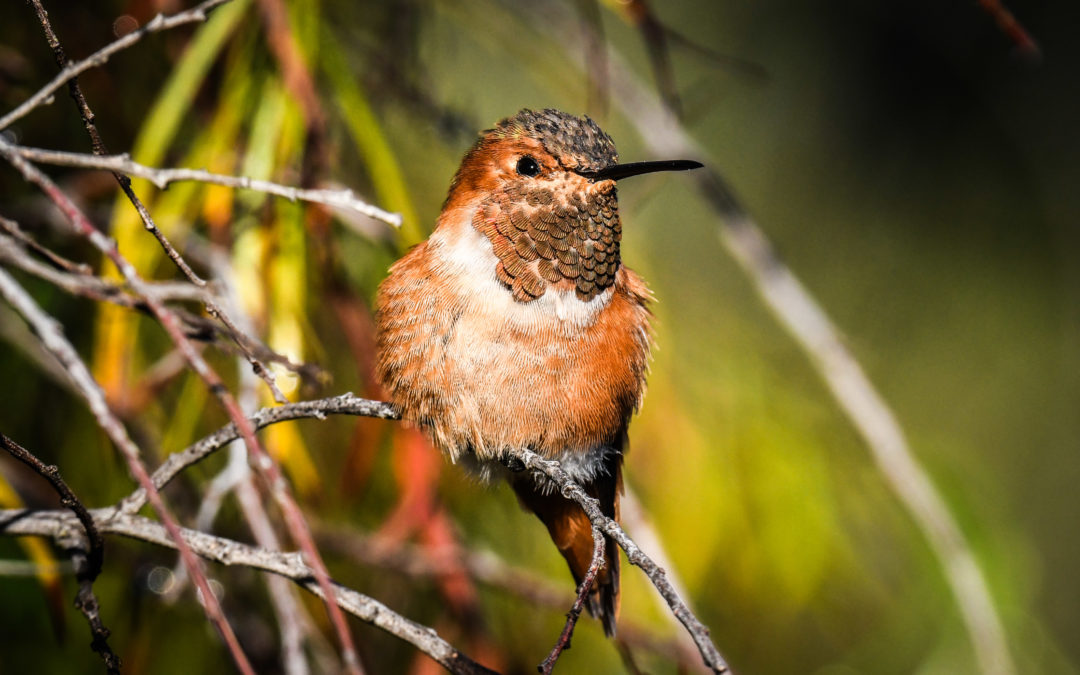
What’s in a Name? The Hummingbirds of Arlington Garden: Charles Hood
Pictured: Allen’s hummingbird. Credit: Charles Hood.
(Charles Hood) This special place is an urban oasis, as we all know subjectively, but that can be shown with quantitative data too, if, for example, we look at the resident and migrant hummingbirds.
Six species show up here during the birding year, and in alphabetical order, they are the Allen’s, Anna’s, black-chinned, calliope, Costa’s, and rufous hummingbirds. (Some bird books would capitalize all of those names, making it “Rufous Hummingbird.”) We are blessed by this abundance. Los Angeles may not be a rainforest, but it sure has a lot of birds. In the Eastern US, there is only one hummingbird species (the ruby-throated), and Africa has none at all—all 350 species of hummingbirds are found only in the New World. read more…
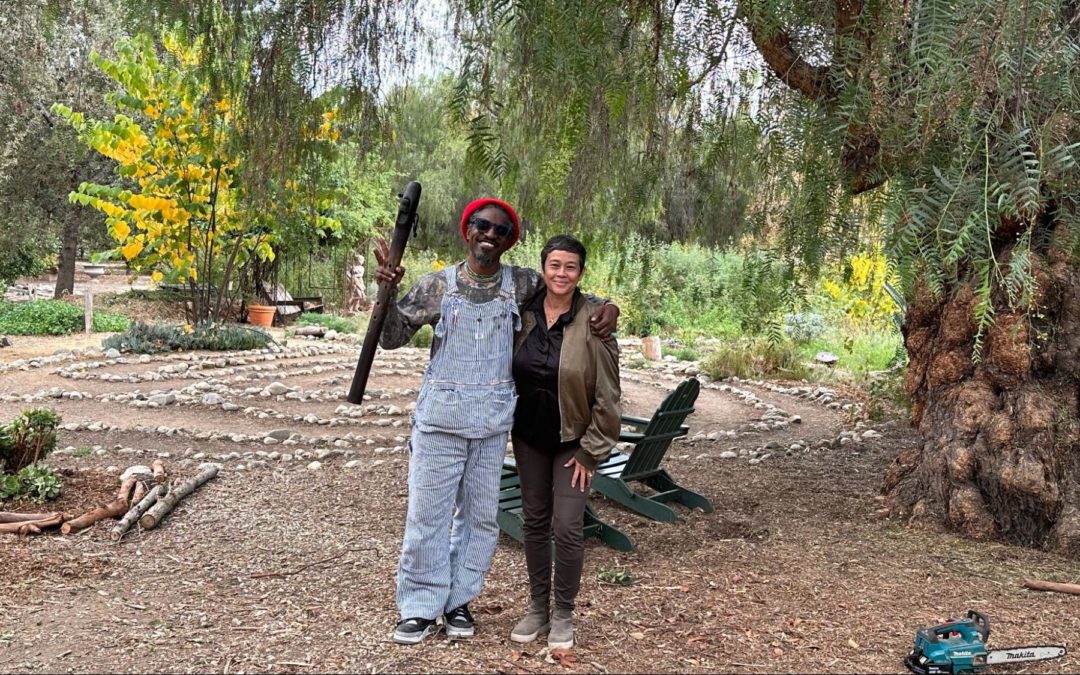
End-of-Year Reflections: Michelle Matthews
2023 has been a year of transformational growth and loss.
We received a $100,000 unrestricted grant from the Harold and Colene Brown Foundation in support of our education mission and for the second year welcomed 5th grade students from Pasadena Unified. The students learn about watershed, compost, and habitat, and they are often in awe when I show them what our community has accomplished over the past 18 years.
We celebrated the garden (on an unusually hot fall afternoon) by raising a record $45,000 at this year’s Autumn in the Garden gala. We honored Ground Breaker Cynthia Kurtz and Constant Gardener George Brumder with a poetry reading by Leah Thomas (founder of Intersectional Environmentalist) and gorgeous harp music by Nailah Hunter. Artist, actor, and Advisory Council member, Billy Zane painted during the event and you can have a chance to bid on his gorgeous artwork here! read more…
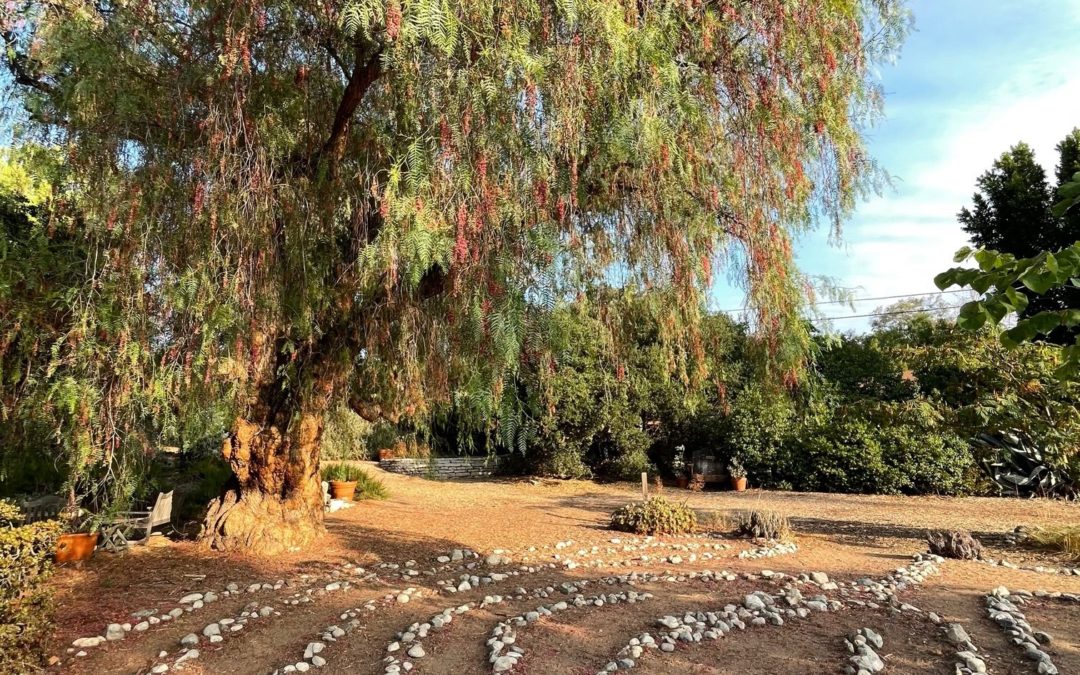
Landscape Share: Late Fall
Life on Earth is faced with incredible ecological challenges. In response, we can devote a portion of our personal landscapes to the natural world — a horticultural sacred share: a portion set aside in our yards or balconies for life on Earth.* In our newly-revived native plant gardening advice column, we ask different gardeners (including Arlington’s experts) for their seasonal advice on habitat gardening in our shared landscapes.
(AJ) Winter is coming, which (contra HBO) is Southern California’s magical season of abundance. What should gardeners expect to see, for instance, between now and the new year?
(TS) Native plants will be soaking up winter rains for robust, healthy, deeply rooted growth in preparation for the dry summer months. Wildflower seeds will germinate and begin to show a light green fuzz. Winter food for birds and bees like toyon and manzanitas will be blooming. And we can enjoy the initial lull of winter before the burst of spring booms and the wildflower show begins.
(AJ) Can gardeners also take a rest right now? Or should we be hard at work?
(TS) Assuming that you aren’t planting a new garden or hand-watering, the gardener can also take a break from sheet mulching, planting, seeding, and so on. Simply sit back and wait for it to warm up again!
(AJ) I have a lawn *well, my landlord has a lawn* that I have planned to get rid of — can I start that process now? What method(s) have you used to kill lawns?
(TS) Nine out of ten times, when I’ve sheet-mulched lawns, I have [managed to] remove them. I take the long road beginning by turning the water off in late spring and sheet-mulching directly over the grass. I irrigate a few times a month after mulching, so that whatever needs to grow will poke its head out, and I can pull it by hand. I turn the water off completely by July, however, and just let the grass roast for the rest of the summer. It’s toast by October – the soil enriched and ready for planting natives.
(AJ) So sheet mulching should wait for the summer months … is there anything that a gardener can do now, if they want to get started with removing a lawn? read more…

Inside Arlington: William
Inside Arlington are the folks who keep us growing. In this column, we interview William Hallstrom, Garden Ambassador, who reflects on gardening, Arlington Garden, and himself.
(AG) What are your responsibilities at Arlington?
(WH) Too many to list in a short format interview? Okay, but for real, I was hired to sell marmalade, answer questions and interact with garden visitors, as well as keeping an eye on things in general. But I’ve had the opportunity to do a lot more. My favorite thing is that I get to have conversations on many different levels with folks coming to the garden, from casual chats with first time visitors just discovering us, to having more in depth discussions with our volunteers.
(AG) How did you discover Arlington Garden?
(WH) I grew up close to Arlington, so it’s maybe tricky for me to say for certain. I probably rode my bike through here when I was a kid. But I definitely rediscovered it in becoming a volunteer mid-pandemic.
(AG) What appeals to you about gardens or gardening?
(WH) Gardening is the easiest way that almost anyone can connect with the natural world around us. Gardening is something that I feel like I can do regardless of how I’m otherwise feeling. read more…
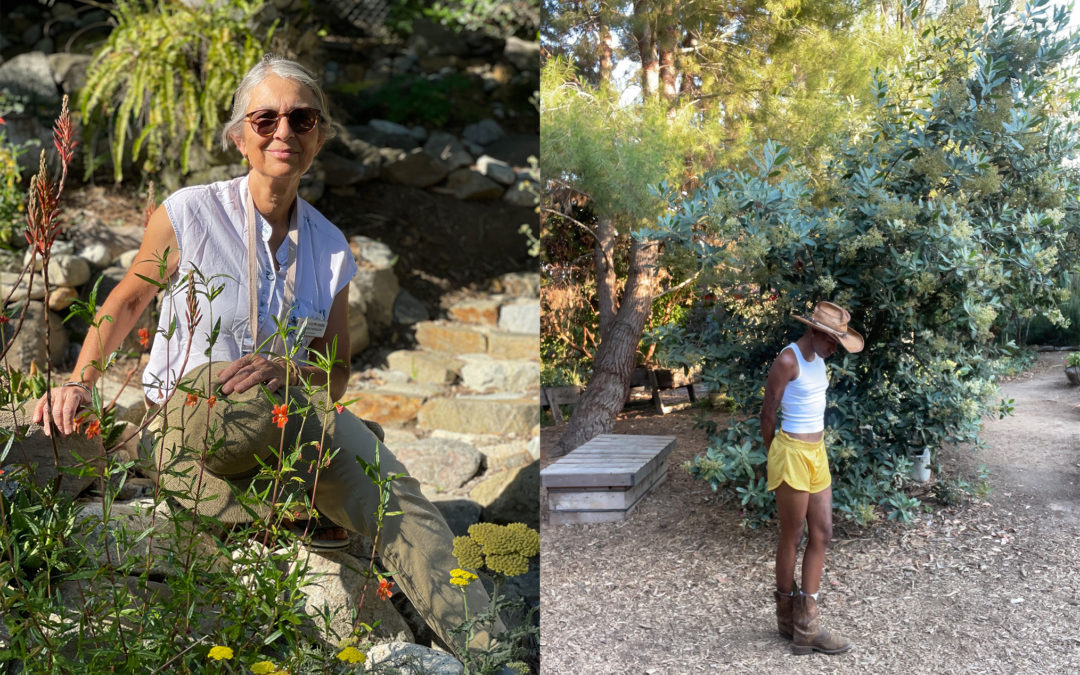
Inside Arlington: capri and Tahereh
Inside Arlington are the folks who keep us growing. In this column, we interview capri kasai, Garden Educator, and Tahereh Sheerazie, Head Gardener, who reflect on gardening, Arlington Garden, and themselves.
AG: What are your responsibilities at Arlington?
capri kasai: the webster’s dictionary definition for gardener is as follows: a person who tends and cultivates a garden as a pastime or for a living. arlington’s definition for gardener is as follows: tender to plants old and new, keeper of the orange grove, sidekick to (and often botherer of) tahereh, workshop facilitator, tour guide, exuberant educator of those big and small, trash picker upper, composter, incredibly delayed email replier, information desk, community member, and the list goes on, but i shall stop there 🙂
Pictured: staff and volunteers who support our PUSD garden tours (L to R) Michelle, Christine, Heather, Tahereh, capri, William, and Antonio.
Tahereh Sheerazie: As “Lead Gardener,” my job is to make sure all is up to snuff at the garden and sometimes cajole, request, or insist that everyone else also keep up with the snuffing aka weeding, mulching, pruning, feeding, keeping pathways accessible and trash invisible, plants hydrated and visitors welcome–barring those [visitors] who [knowingly] stomp in the beds during peak wildflower months to take selfies or prom pictures!
I also talk to everyone who visits and wants to chat – often sharing planting, growing, caring knowledge, and then selling marmalade and promoting our monthly workshops. I also manage Tuesday volunteering, which is where I began my direct engagement with the garden in 2021. Tuesdays are what I enjoy most, since we all know each other well and enjoy the weekly camaraderie. Needless to say, the volunteers’ help moves the needle tremendously and allows for my job to be part-time.
Along with my fellow part-time co-workers and volunteers, I also conduct the weekly PUSD fifth grade field trips [see photo above]. It’s a new thing at Arlington, and it’s been great! read more…
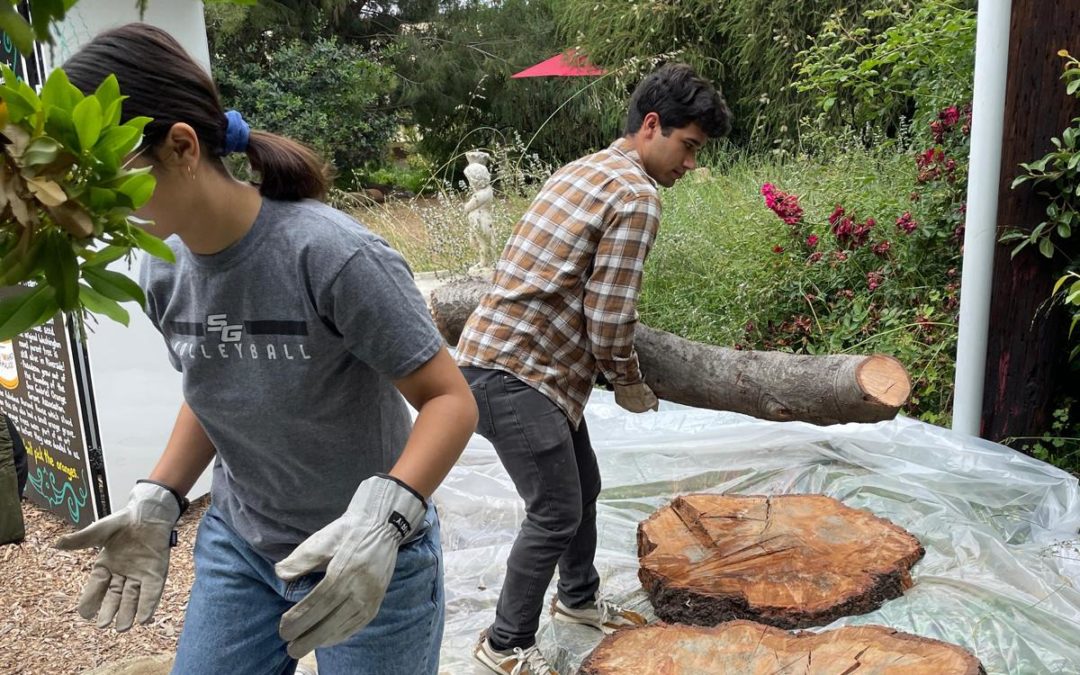
Summer Solstice Garden Update
Michelle Matthew (Executive Director of Arlington Garden) and Tahereh Sheerazie (Head Gardener)
Goodbye Friend
I’ve seen dead trees, but I haven’t seen a tree die before. In February, we noticed moderate dieback on the old coast live oak (Quercus agrifolia) along Arlington Drive during a visit from Mike Evans of Tree of Life Nursery. Concerned, we reached out to many local experts, including arborists and an entomologist and had soil testing done by Waypoint Analytical. Eventually, we found that the oak was weakened by drought stress, had been further weakened by various boring insects, and was overcome by the fungus Phytophthora cinnamomi (as determined by plant pathologist, Paul Santos) from which the tree would not recover. It was a hard decision, but eventually we sought permission to remove the oak from the City of Pasadena – permission is necessary because coast live oak is a locally protected species – and the tree was removed by arborists TreeCareLA on May 16. read more…
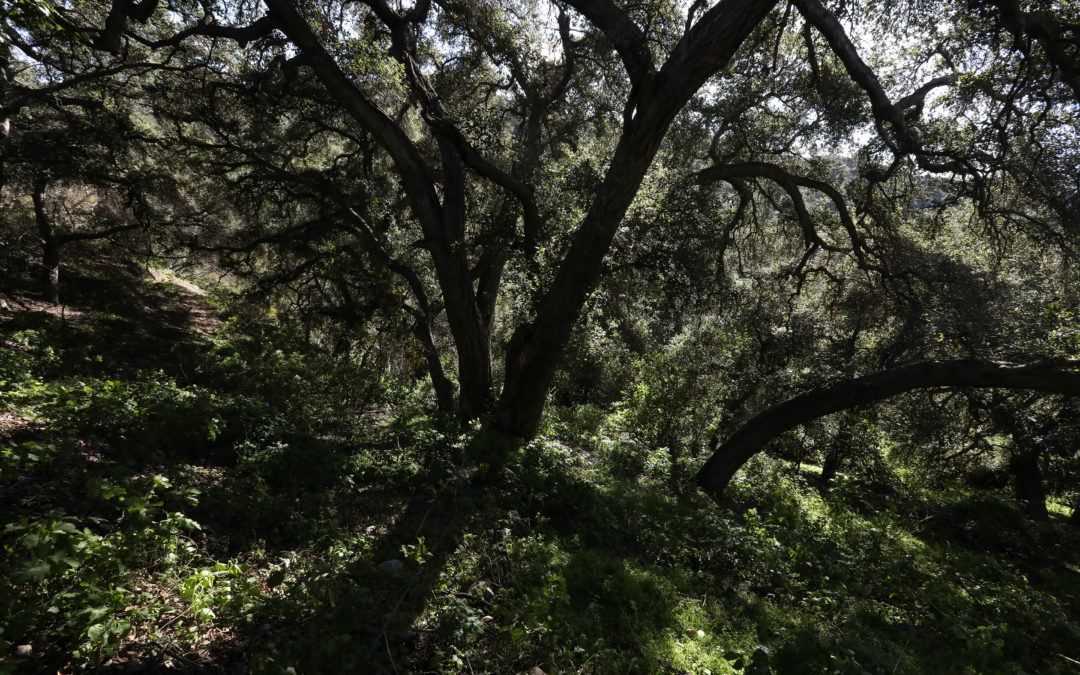
Teaching Trees: Reflections on Oak Ecosystems
William Hallstrom is a naturalist, Arlington Garden staff member, photographer, and an active member of the California Native Plant Society.
For the past several months, Arlington Garden has welcomed 5th graders from Pasadena Unified School District on trips to the garden to learn about our local ecosystems. Our staff is responsible for leading the trips, and we are lucky to have support from volunteers Antonio Pierola and Christine Lai, former teachers, whose help has been invaluable.
I am responsible for leading the students in exploring the oak trees at Arlington. Oak woodlands are a departure point for many topics related to the environment and natural sciences. In fact, there are so many potential subjects for lessons that it can be a bit overwhelming to pare them into a presentation appropriate for the short amount of time that we have with the students!
Arlington Garden is a habitat garden, an urban refuge for wildlife, unlike the sterile grass lawns found in a typical park. As a habitat garden, Arlington is well-suited for these field trips, which aim to teach students about native ecosystems, urban animals, and the importance of keystone species. read more…
